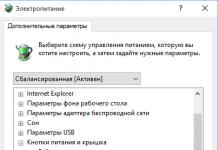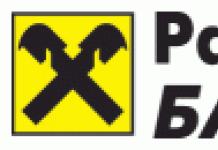And literacy is the key to attracting clients if you work in the field of writing articles, blogging or advertising. Incorrect and sometimes downright rude spelling and use of words can turn people away from your very likely very interesting article. Microsoft Word has long held a strong position among many similar utilities used for creating and editing texts. Naturally, such a large program builder has taken care of preserving your reputation among readers and editors by introducing a special feature that allows you to monitor spelling, grammar and symbol usage.
Spell checking is always automatically turned on in Microsoft Office programs. You've probably often noticed that a certain word or part of it, underlined by a wavy line of different colors, definitely hints at the presence of an error. There are three such colors - red, green and blue, and they indicate a spelling, grammatical or contextual error, respectively.
Spelling settings in Office programs can be divided into 3 categories:
- Setting up automatic text replacement.
- Change spell check settings for all programs.
- Adjust the spelling options in the program you are using.
Virtually every application in Office deals with text in some way. The most common is, naturally, Word, which determines the presence of the maximum number of different parameters. It is worth mentioning that depending on the language version, spelling and grammar settings differ, because each language has various exceptions and features.
Let's look at all the possibilities that allow the author to complete his work faster and better.
Auto Replace Options and Configuration
The most common option for autocorrect is to offer to create a numbered list if the first character in the line is a number. Another option is to replace a word accidentally misspelled (work → work). Quite often, when writing texts or articles, the author may mention some program or company whose name is written in Latin. For example, in this article the concepts Word and Office were used several times, and the author constantly had to change the keyboard layout. Although you can simply set up autocorrect. To do this, go to the main menu by clicking the “file” button, find the “parameters” item and click on it. Among the many configurations, you will see a “spelling” item, and in it - “autocorrect options”. It is here that you can customize everything related to spelling and replacing words written incorrectly or in Latin with their adequate example. Here you can also configure the use of mathematical symbols and abbreviations, although the common majority of them are already in the list.

Auxiliary and personal dictionaries
Spell checking in Word occurs using special built-in dictionaries. If a word is spelled incorrectly or is rarely used, it is likely not in the dictionary. In this case, Word will count it as an error. However, you can add the words you need to your own dictionary, thereby letting the program know that it is correct and widely used. You may notice that at the bottom of the window, if you make an error, a cross will appear on the open book symbol. By highlighting a word and clicking there, a menu will open with options for replacing, skipping, or adding to the dictionary. What to do is up to you.
By default, the program has a dictionary installed called “Custom.dic”. And yet this will not prevent you from creating your own dictionary, choosing when to use it, in what language the text will be written, and so on.
Thesaurus. What kind of animal is it and why is it needed?
Surely many people have noticed the thesaurus and always brushed aside attempts to understand it, considering it unnecessary. This is in vain, because in some cases this parameter will be simply irreplaceable. Of course, the need to dispose of it entirely depends on the size of your vocabulary and knowledge of the language. If you had to write a text in an unfamiliar language, a thesaurus will help you avoid repetition and inappropriate use of expressions, since its main function is to select synonyms and antonyms.
To open the thesaurus, select the editable or inappropriate expression, right-click on it and find the “synonyms” command. This is where you will find this function. From the list of suggested expressions, select the most appropriate one and use it in the text.
Here, in fact, are all the parameters responsible for the correctness of your text and its overall “readability”. Using these settings can greatly facilitate both your work and the reader’s perception of the knowledge you have presented.
Spell checking in Word. Writing competently, especially on websites or blogs, is the main condition for people to come to you. It’s very unpleasant when you see a bunch of gross mistakes. You can understand when a person simply used the wrong key, but when you see an obvious “loser”, it is repulsive. I, too, often rush after my thoughts and may miss a letter or even a whole word, or a comma. Microsoft Word helps me a lot when writing articles. If configured correctly, it will be an indispensable assistant in your creative endeavors. This program has great potential. As you write the text, she can check spelling, grammar, correct your mistakes on her own, suggest which word is best to use in this writing style, select synonyms and much more. Again, I repeat - the main thing is to configure it correctly.
It is much faster and more comfortable to work in a text editor when it is created in advance or ready with thoughtful .
A window will open Options. Select a tab Spelling .
Today we'll set up Word to check spelling and grammar.
In order for the program to automatically check spelling and grammar in your text, open the menu Service. Select a team Options .

In field Spelling check the box Automatically check spelling ;
In field Grammar check the box Automatically check grammar And Also check spelling .
On property Do not highlight misspelled words There is no need to check the box, otherwise if you make a mistake, the program will not show it to you, and you may not notice.
You can leave all other settings as they are.
Next, press the button Settings under the window Set of rules and go out the window Setting up grammar check . In the window Rule set used select the set you need. Personally I use For business correspondence .
Set the switch to Grammar and check all the functions in the window below. Leave everything else as is and press the button OK .

Spell checking in word 2007
To set up automatic spell checking in Word 2007, click at the very top left on the beautiful icon with the program logo, and go to the very bottom of the list that opens. Click on the button OptionsWord .

In the next window, go to the tab Spelling and check the boxes where necessary.

After all the changes, do not forget to click the button at the very bottom OK, to save the settings.
Spell checking in word 2010
In the Word 2010 text editor, the spell check setting is slightly different from the setting in Word 2007.
You must first enter the menu File. Then go down to the entry Options .

And already in the window OptionsWord make the settings described above.

After setting up spell checking in Word, the program itself will check and indicate errors by underlining with a wavy line. The red line means a spelling error, and the green line means a syntax error.
Regarding commas, the program does not always correctly indicate their location, so sometimes think for yourself. But about spelling, she is not wrong.
If the program does not know some word, i.e. this word is not in her dictionary, then you can add this word to the dictionary yourself, just check before doing so, at least on the Internet for the correct spelling.
Modern programs and applications have a very useful function of checking spelling and grammar in texts typed by the user. The Word text editor, which is part of the Microsoft Office application package and has extensive capabilities for checking spelling in documents, is no exception in this regard. In addition to directly detecting errors, Word also allows you to correct them in various ways.
Spelling and grammar checking is enabled in the Word text editor by default. As you enter text, Word automatically analyzes the entered sentences and compares them with its dictionary and, if detected, highlights spelling errors with a red wavy line, and grammatical errors with a green line.
If for some reason spelling is not checked automatically, then you need to check the settings of the Word text editor regarding spell checking.
To do this in Word 2007, click on the button with the Office logo in the upper left corner of the program and in the pop-up window click Word Options.

In the window that opens, select a group on the left side Spelling and check that the following items are checked: Automatically check spelling, Automatically check grammar And Also check spelling.

You can also run spelling and grammar check manually by pressing F7 on the keyboard or press the corresponding button in Word.

The window that opens will show the first error found in the document, starting from the location where the cursor was placed. Depending on the type of error found, the spell checker may suggest replacing the word with the correct spelling if it finds it in the dictionary, skipping the error, or adding the found word to the program’s built-in dictionary.

The last option is used in cases where you are sure of the spelling of a word, but it is not contained in the program’s internal dictionary because it is quite rare and specific.
Everyone makes mistakes. In this case we are talking about spelling errors. When writing, and especially when typing in text editors, the user may make a mistake when typing this or that word. This happens for various reasons, such as ignorance of the rules of the Russian language or a simple typo due to speed dialing. But in times of technological progress, text editors are capable of automatically identifying all errors and suggesting ways to solve them.
This article will talk about how to enable spell checking in Word, how to use it, and much more that somehow relates to correcting typos in typed text.
Turn on spell checking
Initially, you should pay attention to the question of how to enable spell checking in Word. Although it is enabled by default after installation, for some reasons the user may disable it without realizing it. In such cases, use the instructions below to get this tool working again.
- While on the main page of the program, click the "File" button, which is located in the upper left corner.
- In the menu that appears, go to the "Options" section.
- In the window that appears, click on the “Spelling” item located in the panel on the left.
- In the menu "When using spelling, all the checkboxes next to the items.
- In the "File Exceptions" menu, uncheck the boxes that are located there.
- Click OK.
Now you know how to enable automatic spell checking in Word. After completing all these steps, there is no need to restart the program; all changes take effect immediately after clicking the "OK" button.
Check spelling automatically
Once you have found out where to enable spell checking in Word, you can immediately proceed directly to using this tool. First of all, we will analyze the execution of all actions in automatic mode. This does not mean that you will not have to do anything; on the contrary, the program will automatically point out possible spelling errors to you, and you will decide what needs to be done to correct them.
So, suppose you have a document open in front of you that has errors. In this case, they are underlined with colored lines (red, blue or green). To start correcting them, you need to open the Spelling toolbar. To do this, press the F7 key or the "Spelling" button, which is located in the "Review" tab.

After this, the “Spelling” panel will appear on the right side of the window, in which all actions will take place. Immediately the problematic word will be highlighted in the text, and you will need to decide what to do with it. There are four actions to choose from:
- Skip - you skip the expected error and move on to the next word, and the highlight disappears from it.
- Skip all - you skip all errors in the text, deselecting them.
- Add - you add a word to the program dictionary so that if the same error is found, the program does not perceive it.
- Change - you change the misspelled word to the one selected from the list of suggested ones.
- Change all - you change all similar misspelled words to the one selected from the list.

Knowing the meaning of all the buttons on the panel, you can easily correct all errors in the text. As a last resort, if none of the corrections are correct, you can replace the word yourself.
Checking spelling manually
You already know how to enable automatic mode. However, this is not the only way to correct all errors in the text. Now we will look in detail at how to enable spell checking in Word manually.
To complete the task, you must initially pay attention to the underlinings themselves in the text. We already know that these are mistakes. You can fix them not only by pressing F7, but also by pressing the right mouse button (RMB). This is done simply: move the cursor over the underlined word and press RMB; in the context menu, in addition to the usual items, additional ones will appear that duplicate the buttons in the “Spelling” panel; you already know their meaning. All that remains is to select the required action and click on the corresponding line.

Conclusion
Now you know not only how to enable spell checking in Word, but also how to use it. As you can see, the essence is simple, you just need to specify the desired action, and the program will replace everything on its own.
Continuing the topic of effectively working with Word 2007, I would like to dwell on spelling and spelling checking for a product from Microsoft - “Word”, released in 2007. I would like to remind you that in the previous article we discussed the topic: .
Entering and checking spelling of text
If all the necessary styles have already been developed and saved in the template, then entering text is reduced to simply typing on the keyboard or transferring fragments from other documents.
When transferring fragments from other documents, the text may “come” with its own styles. Other styles have nothing to do in your document. From time to time, look through the list of open styles and if you find something new there that came from nowhere, delete it with the command: Home > Styles > Select the required one (having previously selected the text needed to change). Click on the picture to enlarge.
After changing the style, check which style the new text has accepted and, if necessary, apply a different one; if everything suits you, save it.
The main thing to focus on when entering text is when spell checking in Word 2007, - this is on structure and spelling. Check the structure by viewing the document in structure display mode.
Use the built-in spell checkers to check spelling. During the check, words with spelling errors are underlined with a red wavy line, and text fragments with incorrect grammar are underlined with a green line. To understand what the error is, right-click on the underlined text and use the context menu. In the figure below you can see that there is no sign after the decimal point - a space.
If the spelling checkers do not work, check the Automatically check spelling and Automatically check grammar checkboxes on the Spelling tab in the Options dialog box, to do this, right-click on the underlined text and use the context menu, then click Spelling, as shown in the figure below.
And finally, by clicking on - options, We get to the menu we need, where we put the necessary checkboxes.
It was the case in earlier versions of Word that spell checkers were not installed with the program. Then the program had to be rearranged and be sure not to forget about these components. These issues have been corrected in Word 2007.
I think that this article will help not only students, but also bloggers (webmasters), since it helps them write competent texts without errors, thereby allowing them to establish themselves as an educated person among their readers.


























